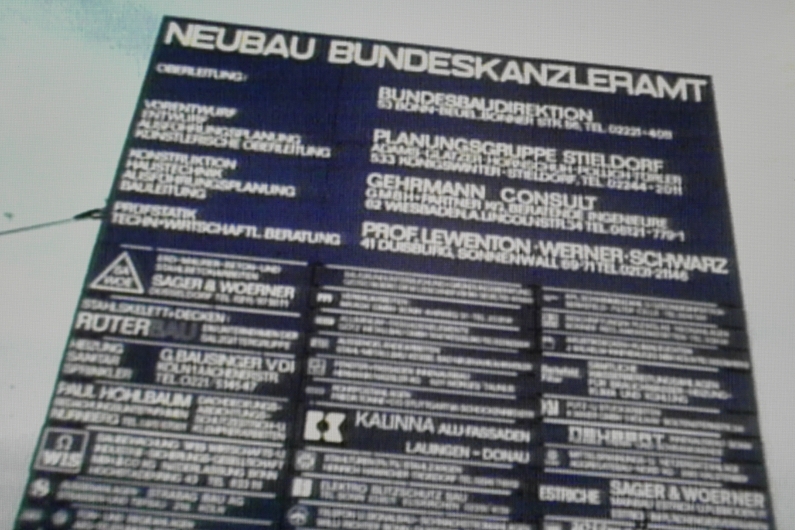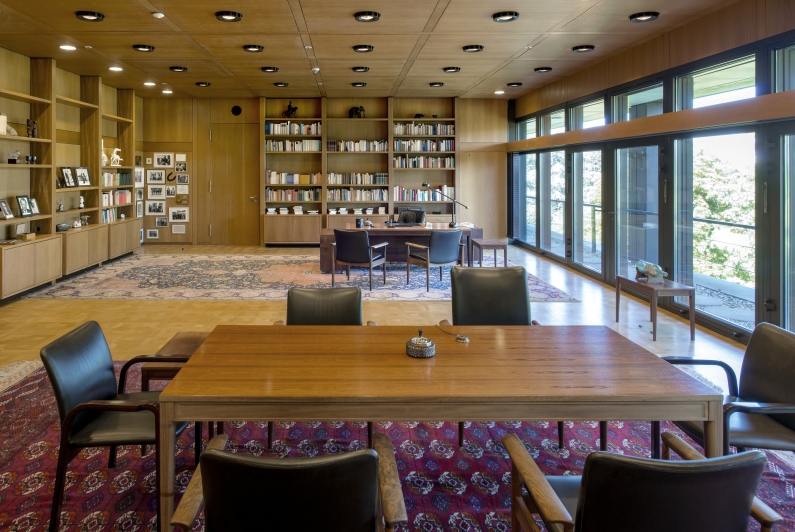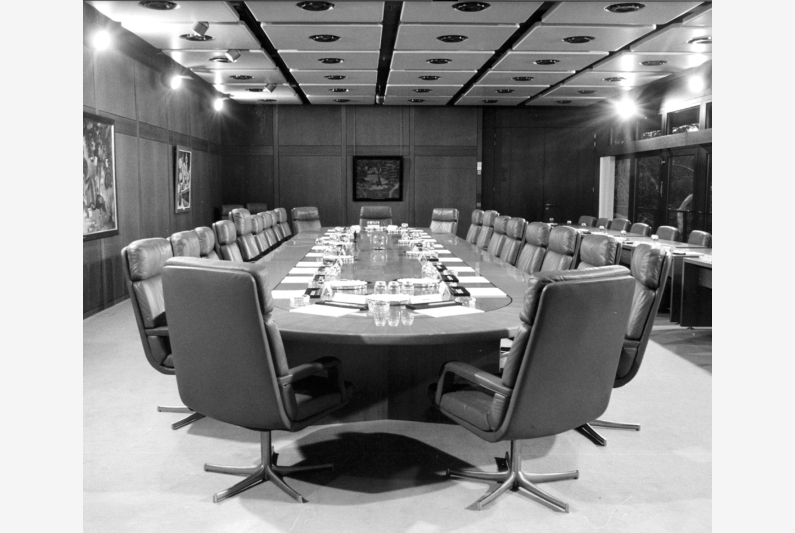Chancellor Helmut Schmidt had Henry Moore’s sculpture “Large Two Forms” installed in front of the Federal Chancellery, 2017.
akg/Florian Monheim/Bildarchiv Monheim GmbH
This birds-eye view highlights the austere, functional architecture of the Federal Chancellery.
Stadtarchiv und stadthistorische Bibliothek Bonn
Visitors need to register in order to visit the Bundeskanzleramt.
To the Federal Chancellery
This board informed about the construction work and the clients and companies involved.
Bundesregierung
The Chancellor’s study contains the original furnishings from the time of Chancellor Helmut Schmidt, 2016.
Stiftung Haus der Geschichte/Axel Thünker
The cabinet room in the former Federal Chancellery has been preserved, along with the Chancellor’s office, 1998.
Bundesregierung/Julia Fassbender


